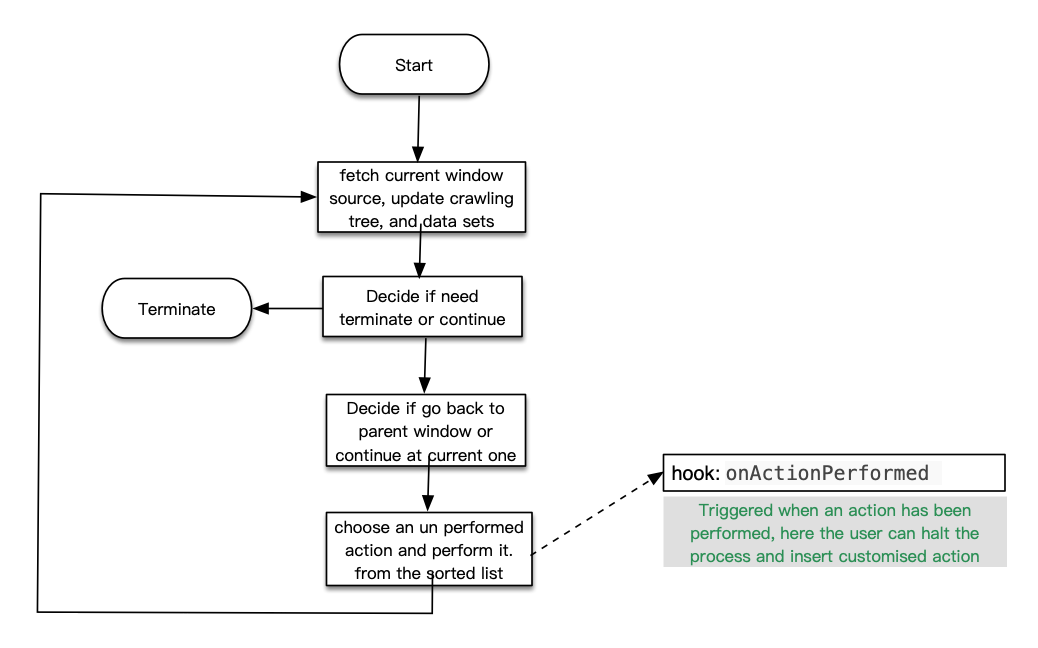# Hooks
# 1. Why do we need it:
Even though the configuration file's parameters provides comprehensive ways of customizing the crawling behavior for your target app, there may be some tricky scenes that you need a more direct control on the crawling process. For example:
Case 1 : if your app contains a login page and after the first time you login you have to slide down until end of an agreement and tick a check box and then click the confirm button before you can enter the home panel of your app. You may have to write a complicated list of specific actions in your configuration parameter to perform these series of behavior.
Case 2 : during the middle of crawling, if you want to test a very specific section of your app which is embedded inside of deep layers of activities/view controllers, it will also be like hell if you can only make it via a set of actions in configuration file.
# 2. Trigger points:
Hooks provides a direct way for user to take full control of the crawling process in the following stage.

# 3. Hook APIs
This sections gives you an overview about hook methods and their input output params.
# onActionPerformed
/**
* Method to perform action for the current platform, invoked when the action is performed
* @Params: action the action which belongs to current active node, user can determine the priority of action execution
* @Params: crawler the crawler instance which contains the context information as well as crawler config
* */
Hooks.prototype.onActionPerformed = async function(action, crawler) {
// password input
if (action.name == "Enter your MPIN") {
}
};
# 4. Writing your hooks
Refer to the following code on how to operate in side of the hook method.
/**
* Method to perform action for the current platform.
* @Params: action the action which belongs to current active node, user can determine the priority of action execution
* @Params: crawler the crawler instance which contains the context information as well as crawler config
* */
Hooks.prototype.onActionPerformed = async function(action, crawler) {
// password input
if (action.name == "please input password") {
// example of type input to a xpath element, you need to use app-inspector to get the correct xpath value
await this.type({'method':'xpath', 'xpath':'//*[@resource-id="com.github.android_app_bootstrap:id/mobileNoEditText"]', 'value': '中文+Test+12345678'});
await this.type({'method':'xpath', 'xpath':'//*[@resource-id="com.github.android_app_bootstrap:id/codeEditText"]', 'value': '1111111'});
// example of trigger click events
await this.click({'method':'xpath', 'xpath':'//*[@resource-id="com.github.android_app_bootstrap:id/login_button"]'});
// example of trigger drag
await this.drag({'location': {'fromX': 100, 'fromY': 100, 'toX': 200, 'toY': 200}, 'duration': 2.0});
// wait for 2 second
await this.sleep(2000);
}
};